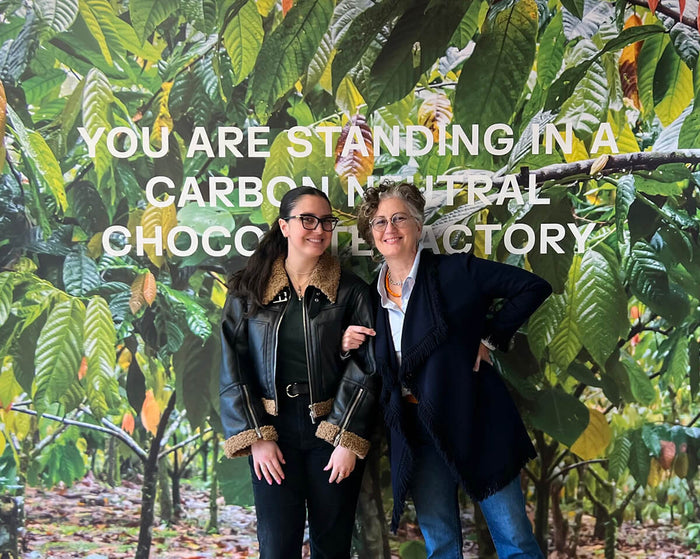Our commitment to the planet – and you.
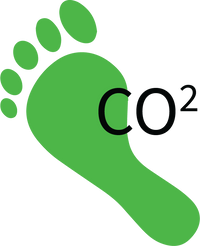

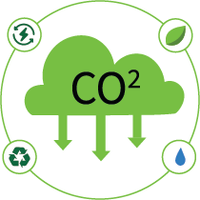
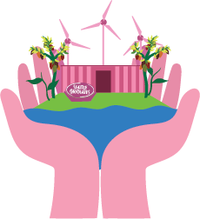
A carbon footprint is the total amount of greenhouse gases, including carbon dioxide and methane, that are generated by our actions; expressed as CO2. Greenhouse gases can be emitted through the burning of fossil fuels, land clearance, and the production and consumption of food, manufactured goods, materials, wood, roads, buildings, transportation, and other services.
We work with GreenFeet to track, measure and manage our carbon emissions to reduce our output and improve sustainability. Here’s how we calculated our corporate emissions by category:
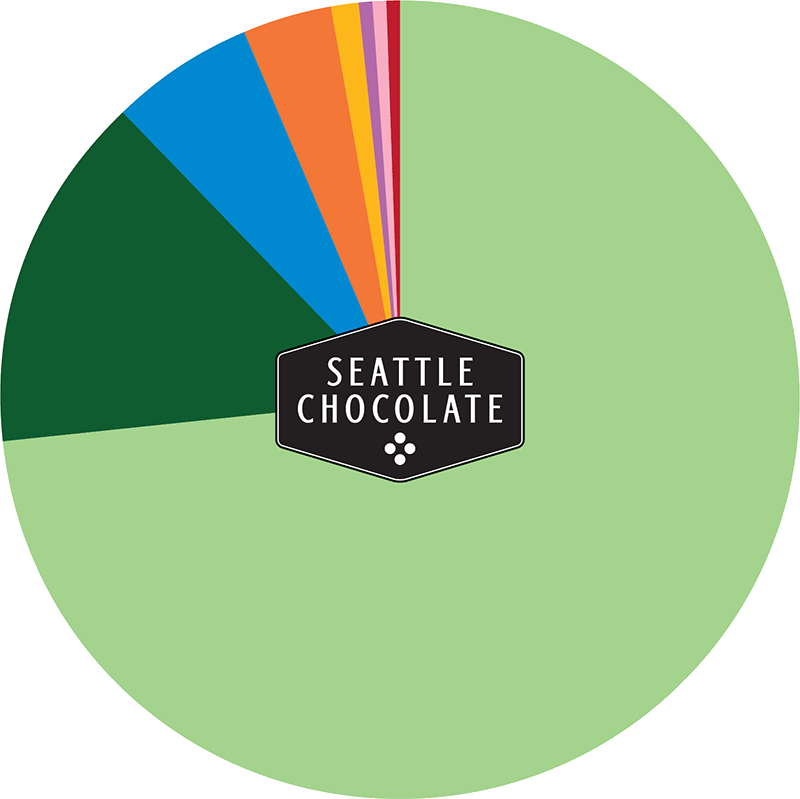
73.5% products
From ingredients like toffee and birthday sprinkles to packaging like gift boxes and beautiful bar wraps, half of our footprint is due to ingredients and packaging. This number factors in the making of all of our ingredients, including those made by external partners.
14.5% shipping
A large portion of our carbon footprint is also due to shipping, whether that be incoming shipments of ingredients or packaging, or the chocolate we’re sending out to retail stores or your doorstep!
5.8% employee commute + work from home
This includes all of our employees’ commutes to work, whether they take a car, bus, or bicycle.
3.5% electricity
This includes all the electricity it takes to run our factory – though we do it as green as we can!
1.1% heat
We use natural gas to heat our factory and office when needed.
0.6% refrigerants
A fun fact about chocolate? It melts. Our bars and truffles go through a cooling tunnel as they’re made, and they also need to be stored at a slightly cool temperature before they make their way to you.
0.6% business travel
This includes employee travel to trade shows, conferences, meetings, hotel stays, etc.
0.4% waste
We’re always working to get our waste as low as possible! Currently at less than 2%, this number includes recycle diversion, compost diversion, and any general waste that goes to the landfill.
*SCC’s carbon benchmarking was done in the first quarter of 2022 using data from the year 2021 as a baseline. The carbon footprint calculation was conducted in accordance with the revised GHG (Greenhouse Gas) Protocol Corporate Standard and the Corporate Value Chain Accounting and Reporting Standard.
There are only two ways to manage the greenhouse gas effect: reduce the amount of new emissions into the atmosphere (mitigation), and remove the past emissions (carbon removal).
Because we manufacture a product and send it all around the country, it is virtually impossible to reduce our carbon emissions to zero - and mitigation alone cannot reverse climate change. So we purchase carbon offsets through projects that reduce carbon emissions and remove carbon from the atmosphere. We became officially carbon neutral when our offset credits purchased became equal to our CO2 footprint.
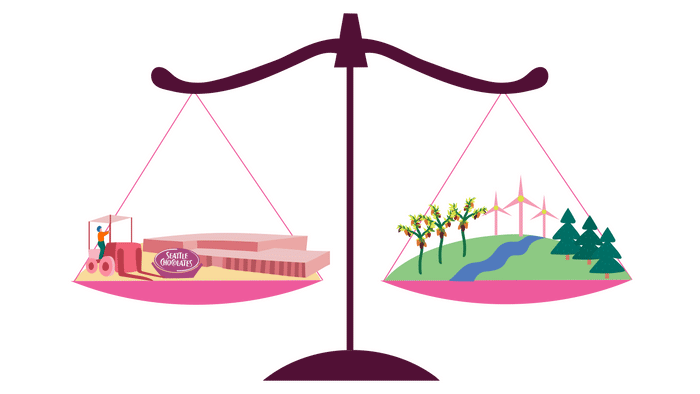
We purchase carbon offsets for carbon removal using regenerative agriculture. To date, we have removed 3,000 tons of CO2 by buying carbon offsets with our partner Nori, a local organization that focuses on Regenerative Agriculture.
Regenerative agriculture enhances soil health, promotes biodiversity, fosters sustainable farming, and sequesters CO2 from the atmosphere into the soil, where it belongs. Seattle Chocolate has supported six regenerative agriculture projects:
- Muff Farms in Iowa
- Harborview Farms in Maryland
- Petersen Farms / R.A. Pete Farms in Nebraska
- Bayer Carbon Program farmer in Iowa
- Miltrim Farms in Wisconsin
- Willis Farms in Tennessee
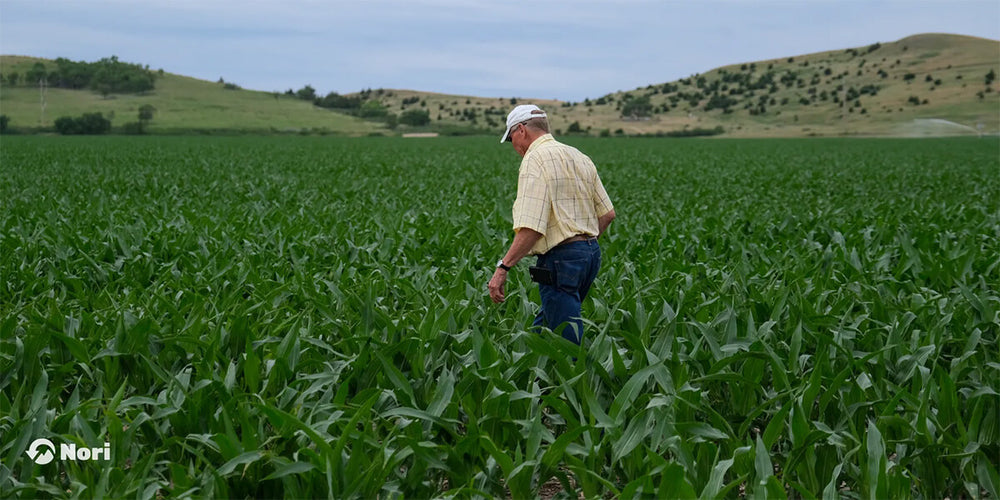
Regenerative agriculture stands out as one of the few currently available carbon sequestration methodologies with the potential to remove multiple gigatons of carbon from the atmosphere each year. Beyond carbon sequestration, it also offers a range of climate-positive co-benefits:
- Enhanced soil health, fertility, and nutrient use efficiency
- Improved soil structure, erosion resistance, and soil water dynamics.
- Improved air and water quality
- Support for soil biodiversity
- Enhanced ecosystem biodiversity and conservation
- Nutrient-dense food production
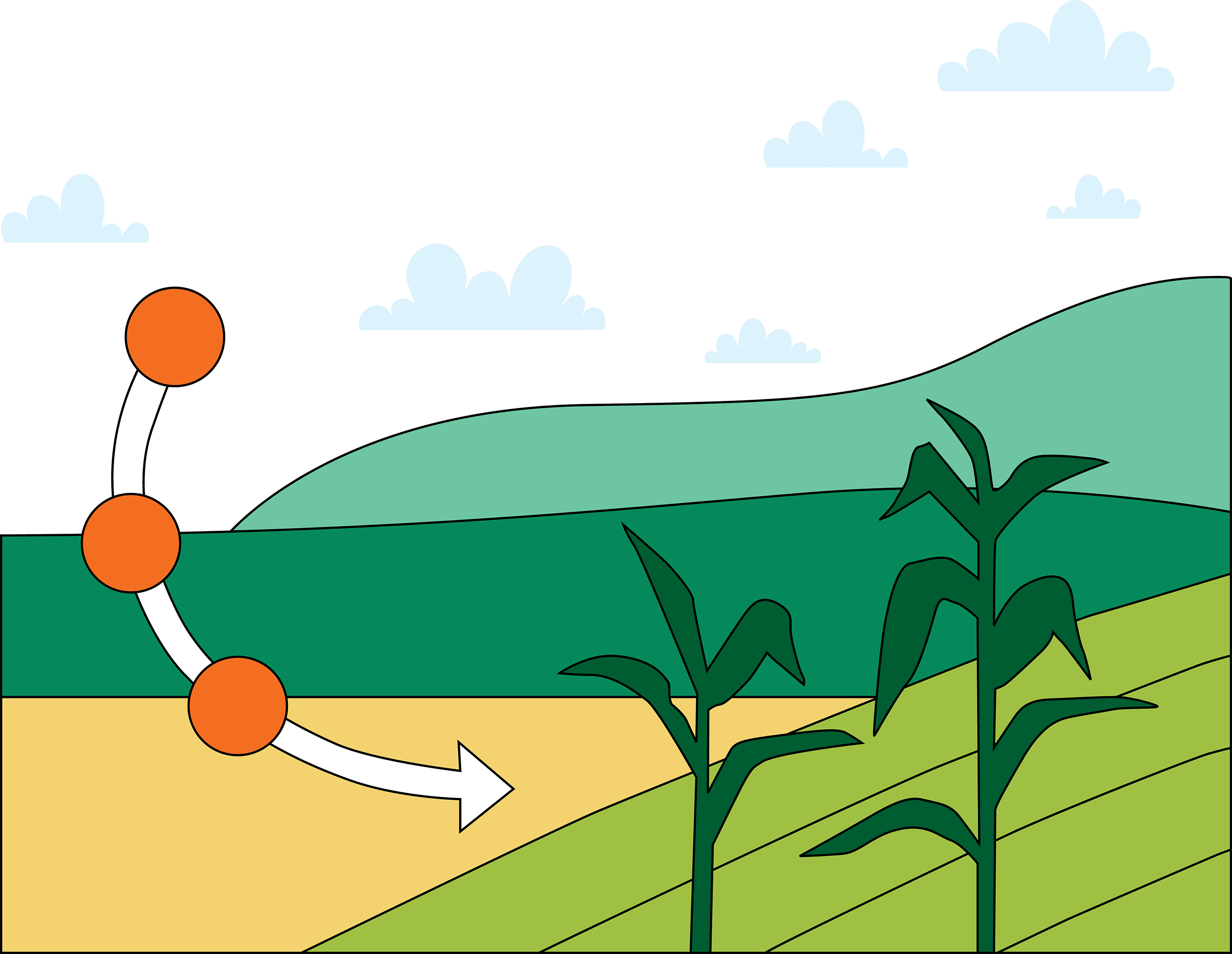
Sustainable Packaging:
Seattle Chocolate truffles twist wraps are compostable. Seattle Chocolate and jcoco bar wraps, gift boxes are recyclable. And, only water-based, non-toxic inks are used on packaging.
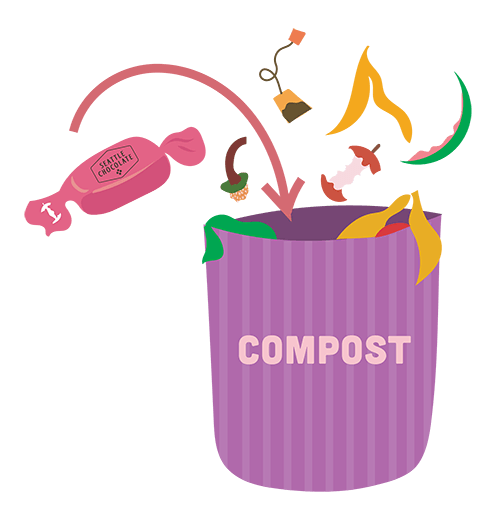
Employee Transportation:
One mile of driving emits about one pound of CO2. In order to reduce carbon emission by about 30 MT CO2 per year, SCC’s office staff works from home 3 days a week.

Diverting waste away from landfill:
- SCC diverted 22 tons of food waste to composting.
- 94 tons of cardboard and paper were recycled.
- We are on track to recycle an additional 37 tons of plastic.
- Composting paper towels from kitchens and bathrooms diverted about 1100 lbs of waste from the landfill.

Reducing energy usage:
SCC now uses only LED lights in its building. LED lights are up to 80% more efficient than traditional lighting such as fluorescent and incandescent lights, resulting in less greenhouse gas emissions.

Additional sustainability initiatives 2023 & beyond
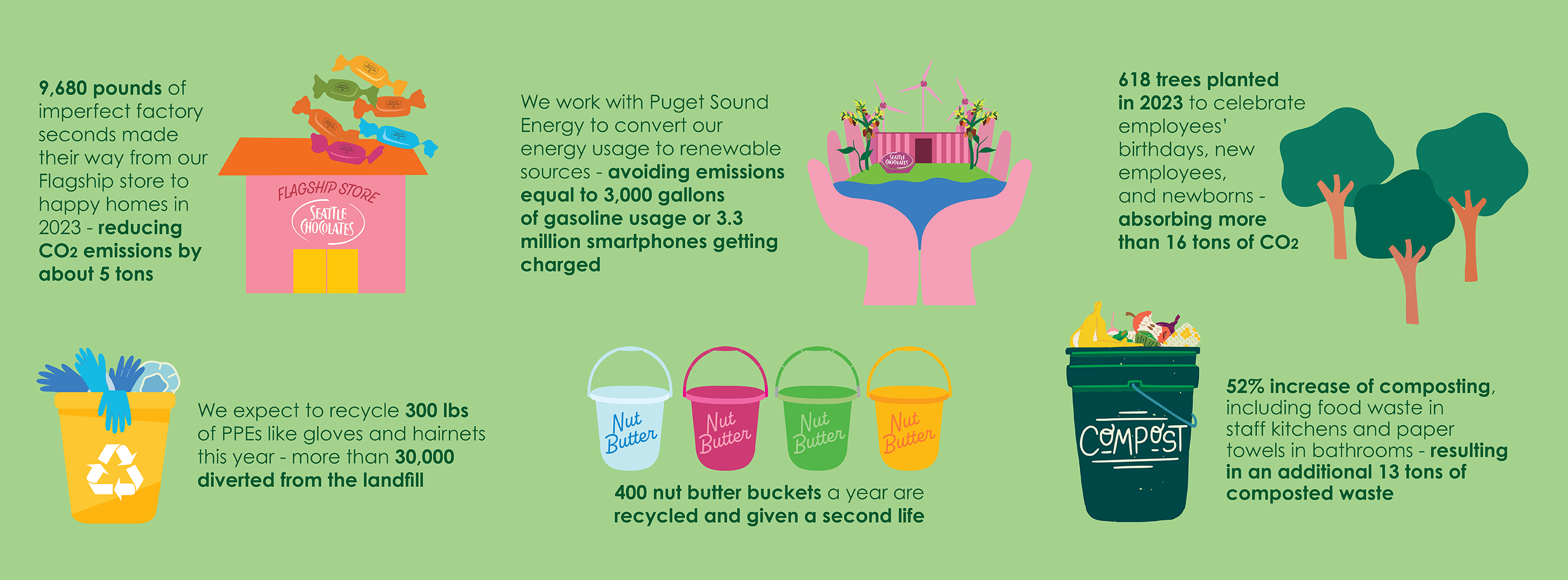
Seattle Chocolate's mission is to brighten the world through chocolate while upholding core values that prioritize defending the planet and empowering the underserved.
To live out these ideals and address climate change, SCC has made the following sustainability pledges.
We commit to...
- Maintain our Carbon Neutral Status
- Achieve Science Based Targets* to do our part to limit global warming to 2.7F above pre-industrial levels by
- Reducing energy (gas and electricity) based emissions by 42% by 2030
- Net Zero emissions by 2050
- Get Zero Waste certified by 2030
*Science Based Target Initiative (SBTI) provides companies with a clearly defined path to reduce emissions in line with the Paris Agreement goals
read the full report
